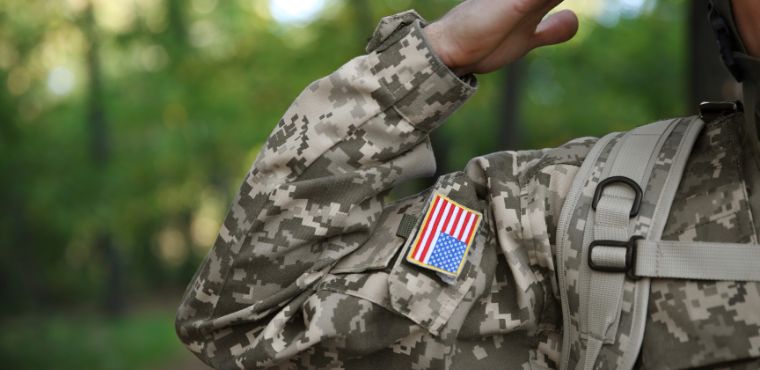From a tactical perspective, if you’re out on the ground in the field during wartime and wearing camouflage, you have an advantage, at least from a distance. You can even become effectively hidden at close range with most of these camouflage patterns. It all comes down to how you use your materials, and what we have used thus far has been effective on the battlefield. Here are the different types of camouflage patterns so that you can observe them for yourself.
Brushstroke
Many people know this design as the lizard pattern. It came out sometime in the 1950s and 1960s, originated in the United Kingdom, and served to be the national camouflage for over a decade or longer. Additionally, foreign countries, such as Pakistan and Rhodesia, popularized it later on.
Chocolate Chip
People also know the chocolate chip pattern as the “Six Color Desert,” with a more nuanced version that would later inspire the “Three Colored Desert.” US military efforts introduced this during the first Gulf War. It resembled chocolate chip cookies, hence the name.
DPM
This pattern was another invention outlined by British efforts, similar to the lizard pattern. DPM stands for “Disruptive Pattern Material.” It took the color scheme from the M81, which is nearly identical to the woodlands.
Digital Pattern
The US Marine Corps adopted these in 2001, known more formally as the MARPAT. However, they came out in the ‘90s and came in three versions: CADPAT, Vegetato, and multi-cam.
Duck Hunter
While the duck hunter wasn’t a widely known pattern, it came from an early model seen during the second world war in Europe. US military forces used it in the Pacific and no other theater. Then, south Asian militias would later adopt it as their go-to pattern. This format is a primary example of how much military patterns have changed.
Flecktarn
A design completely exclusive to Germany at one time, the flecktarn still stands as their trademark today. It resembles the woodland pattern also, but it’s smaller with more brown and dark, dusky hues.
Leaf
Synonymous with the Vietnam war, this pattern would become infamous in that era. It was, and is, the predecessor of the M81 Woodland and has influenced many others to date.
This article has been a brief overview of the different types of camouflage patterns known throughout the world. Now you have some perspective on how they came to be and how they influenced each other.






